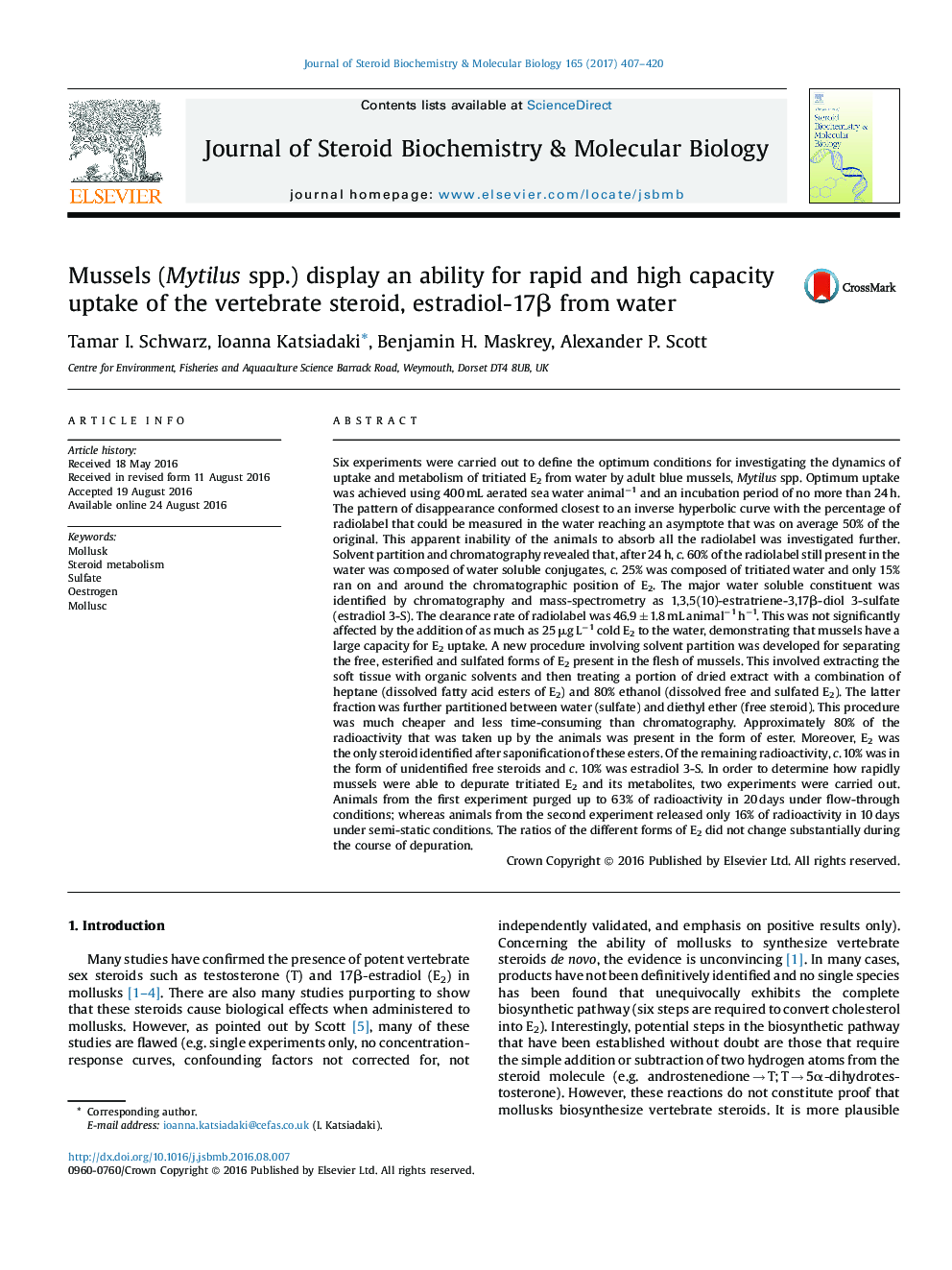| کد مقاله | کد نشریه | سال انتشار | مقاله انگلیسی | نسخه تمام متن |
|---|---|---|---|---|
| 5513152 | 1540982 | 2017 | 14 صفحه PDF | دانلود رایگان |

- The rate of tritiated E2 removal is not affected by the amount of E2 available.
- Half of the radiolabel absorbed is retained and half is excreted as E2 3-sulfate.
- New method for separating free and conjugated E2 metabolites in mussel tissues.
- Average ratio of free, sulfated and esterified E2 in mussel tissue is 10:10:80.
- The presence of E2 in mussels is not evidence of endogenous synthesis.
Six experiments were carried out to define the optimum conditions for investigating the dynamics of uptake and metabolism of tritiated E2 from water by adult blue mussels, Mytilus spp. Optimum uptake was achieved using 400 mL aerated sea water animalâ1 and an incubation period of no more than 24 h. The pattern of disappearance conformed closest to an inverse hyperbolic curve with the percentage of radiolabel that could be measured in the water reaching an asymptote that was on average 50% of the original. This apparent inability of the animals to absorb all the radiolabel was investigated further. Solvent partition and chromatography revealed that, after 24 h, c. 60% of the radiolabel still present in the water was composed of water soluble conjugates, c. 25% was composed of tritiated water and only 15% ran on and around the chromatographic position of E2. The major water soluble constituent was identified by chromatography and mass-spectrometry as 1,3,5(10)-estratriene-3,17β-diol 3-sulfate (estradiol 3-S). The clearance rate of radiolabel was 46.9 ± 1.8 mL animalâ1 hâ1. This was not significantly affected by the addition of as much as 25 μg Lâ1 cold E2 to the water, demonstrating that mussels have a large capacity for E2 uptake. A new procedure involving solvent partition was developed for separating the free, esterified and sulfated forms of E2 present in the flesh of mussels. This involved extracting the soft tissue with organic solvents and then treating a portion of dried extract with a combination of heptane (dissolved fatty acid esters of E2) and 80% ethanol (dissolved free and sulfated E2). The latter fraction was further partitioned between water (sulfate) and diethyl ether (free steroid). This procedure was much cheaper and less time-consuming than chromatography. Approximately 80% of the radioactivity that was taken up by the animals was present in the form of ester. Moreover, E2 was the only steroid identified after saponification of these esters. Of the remaining radioactivity, c. 10% was in the form of unidentified free steroids and c. 10% was estradiol 3-S. In order to determine how rapidly mussels were able to depurate tritiated E2 and its metabolites, two experiments were carried out. Animals from the first experiment purged up to 63% of radioactivity in 20 days under flow-through conditions; whereas animals from the second experiment released only 16% of radioactivity in 10 days under semi-static conditions. The ratios of the different forms of E2 did not change substantially during the course of depuration.
Journal: The Journal of Steroid Biochemistry and Molecular Biology - Volume 165, Part B, January 2017, Pages 407-420